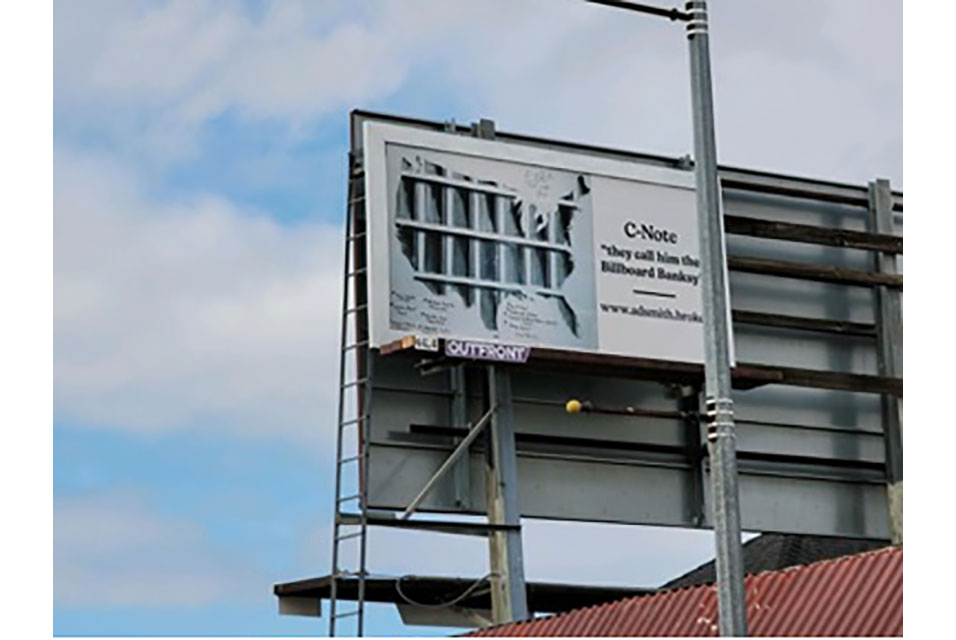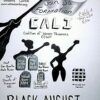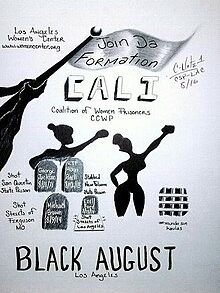Donald “C-Note” Hooker is a prison artist who has been incarcerated for over 20 years. Despite his circumstances, C-Note has found a way to express his creativity through his art.
His work often celebrates Black culture and history, and he has become a well-known and respected artist in the prison art community.
C-Note was born in 1965 in Los Angeles, California. He grew up in a middle class neighborhood. After his parents divorce at 14, he got involved with the Raymond Crips, this led him to several stints in the Los Angeles County juvenile jail system. This was also the time that the Hip Hop movement out of New York City, began to infiltrate the culture in Los Angeles.
In 1998, C-Note was convicted of assault with a deadly weapon and sentenced to 35 years to life in prison. He was incarcerated at the infamously racist High Desert State Prison (HDSP) in the Western Sierra-Nevada Mountain range.
At HDSP, C-Note began to teach himself to draw. After 10 years, he began to show a talent for drawing and painting, and he began to create his own unique style of art. His work often featured African American figures and symbols, and he often used his art to express his feelings about racism and injustice.
C-Note’s art quickly gained attention from other inmates and prison officials. In 2015, he wrote and starred in the opening act to
Redemption in Our State of Blues. Redemption had garnered national recognition in People, local recognition in broadcast and press. Redemption also led to a first-in-the-nation prison release project of free housing, free college, and actual paid theatrical work with The Strindberg Laboratory.
In 2016, the University of California at San Bernardino and former UCSB professor Annie Buckley curated the exhibition Through the Wall: Prison Arts Collective. This was California’s first exhibition to feature works by both male and female prisoners. The exhibition was held at the CB1-Gallery in Downtown, Los Angeles from May 14th to 29th.
The exhibition featured works by prisoners from three different California prisons: the California Institution for Men (CIM), the California State Prison, Los Angeles County (CSP-LAC), and the California Institution for Women (CIW).
Clyde Beswick founded the CB1-Gallery in 1997. However, in 1998, he was found guilty of embezzlement and filing false tax returns. He served a little more than 13 months in county jail and state prison. In 2018, the CB1-Gallery closed following allegations of fraud by some artists.
One of the works featured in the exhibition was C-Note’s 2014 Mprisond. This piece is a mixed media exploration of the theme of incarcerating women.
The exhibition was a success and received positive reviews from critics and the public. It was seen as a valuable opportunity to showcase the creativity and talent of incarcerated people.
The exhibition also raised important questions about the role of art in prisons and the potential for art to help prisoners to heal and to rebuild their lives.
During the summer, fall, and winter of 2021, three of his works, Paula Picassa, Incarceration Nation, and Colored Girl Warholed received outdoor public exhibitions.

(2021) Denver, Colorado, Art for Redemption mural. The mural features C-Note’s 2021 work Paula Picassa, amongst other prison artists works.

(2021) Silicon Valley, California, “Look Up!” art exhibition featuring C-Note’s 2017 work, Incarceration Nation on a Billboard.

(2021) Silicon Valley, California, “Look Up!” 2 Hope & Beauty art exhibition featuring C-Note’s 2015 work, Colored Girl Warholed on a Billboard.
C-Note’s art is a powerful testament to the human spirit. Despite the challenges he has faced, he has found a way to use his art to express his creativity and to celebrate Black culture. His work is an inspiration to others who are struggling to overcome adversity.
Juneteenth and the Importance of Black Art
Juneteenth is a holiday that celebrates the end of slavery in the United States. It is a time to reflect on the progress that has been made since then, but it is also a time to remember the work that still needs to be done.
Black art is an important part of the Juneteenth celebration. It is a way to honor the contributions of Black people to American culture and to celebrate their resilience and strength.
Donald “C-Note” Hooker is one of many Black artists who have used their work to celebrate Black culture and history. His work is a powerful reminder of the importance of art in the fight for equality.
As we celebrate Juneteenth this year, let us take a moment to reflect on the work of artists like Donald “C-Note” Hooker. Their work is a reminder of the power of art to inspire and to uplift. It is also a reminder of the importance of continuing to fight for equality for all people.
This post was originally published on this site be sure to check out more of their content






